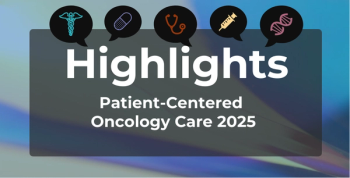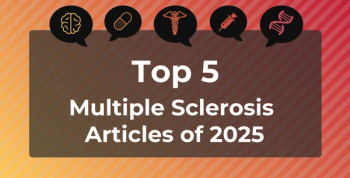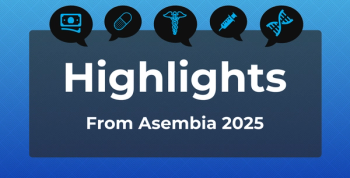
Nomogram Aids Early Detection of Myasthenic Crisis Risk
Key Takeaways
- A nomogram was developed to identify high-risk myasthenia gravis patients, focusing on those with bulbar weakness.
- Key risk factors include MGFA stage 3/4, thymoma presence, inability to lie flat, and low oxygenation index.
Despite nurses often being the first health care workers many patients encounter, they frequently lack adequate tools to optimally evaluate their patients’ conditions, as in the case with myasthenia gravis and being able to predict patients at risk of myasthenic crisis.
Patients at high risk of myasthenia crisis could potentially benefit from a nomogram developed in a new study and fashioned to identify this subset of patients from among those who have
The study was published
This retrospective analysis comprised 385 patients overall who were treated at the Myasthenia Gravis Clinic of Shijiazhuang People’s Hospital between January 2022 and January 2024 (n = 308) and a validation cohort (n = 77) for February 2024 through June 2024. To be included, patients had to have a confirmed myasthenia gravis diagnosis, Myasthenia Gravis Foundation of America (MGFA) stage 2a disease or higher at admission, and symptoms with bulbar muscle involvement. In addition, disease severity was assessed by the Myasthenia Gravis Muscle Group Endurance Scale, scored from 0 to 100, with higher scores indicating greater disease severity, the study authors noted.
Of the patients in the training group, their mean (SD) age was 55.15 (1.02) years, fewer than half (47.4%) were female patients, hypertension (42.0%) and diabetes (27.0%) were common comorbidities, 47.0% had a history of thymectomy, 84.4% reported difficulty breathing, 24.7% had an oxygenation index of 300 mm Hg or less vs 75.3% with an oxygenation index of 300 to 500 mm Hg, and 47.8% reported medication of pyridostigmine bromide at 240 mg/24 h or more vs 52.2% reporting less than 240 mg/24 h.
Overall, myasthenic crisis was seen in 15.8% of the patients, with these patients being slightly older compared with the patients who did not have myasthenic crisis (56.63 [16.70] vs 54.89 [15.92] years), more reporting MGFA stage 3/4 disease (63.0% vs 41.2%), and having higher rates of both thymectomy and thymoma (52.2% and 56.5% vs 46.2% and 33.2%).
Univariate logistic regression analysis demonstrated associations (all P < .05) between higher MGFA disease stage, presence of thymoma, inability to lie flat, elevated PCO₂ (or partial pressure of carbon dioxide, at ≥ 45 mm Hg), reduced oxygenation index (≤ 300 mm Hg), increased oropharyngeal secretions, emotional irritability, and higher pyridostigmine dose (≥ 240 mg/24 h):
- MGFA stage 3/4 vs stage 2 (reference): OR, 2.432 (95% CI, 1.273-4.647)
- Thymoma vs stage 2 disease: OR, 2.615 (95% CI, 1.383-4.945)
- Inability to lie flat vs normal body position (reference): OR, 3.977 (95% CI, 1.970-8.029)
- Elevated PCO2 vs 35 to 45 mm Hg (reference): OR, 2.966 (95% CI, 1.471-5.981)
- Reduced oxygenation index vs 300 to 500 mm Hg (reference): OR, 3.943 (95% CI, 2.055-7.568)
- Increased oropharyngeal secretions vs normal (reference): OR, 2.262 (95% CI, 1.046-4.892)
- Emotional irritability vs none (reference): OR, 2.642 (95% CI, 1.361-5.127)
- Higher pyridostigmine dose vs less than 240 mg/24 h: OR, 2.324 (95% CI, 1.208-4.468)
Multivariate logistic regression did not reveal any relationships of significant collinearity; however, MGFA classification stage 3/4 (P = .014), presence of thymoma (P = .014), inability to lie flat (P = .003), and an oxygenation index value of 300 mm Hg or less (P = .001) were shown to be independent predictors of risk of myasthenic crisis.
The nurses’ nomogram, which incorporated MGFA classification stage 3/4, presence of thymoma, body position, PCO2, oxygenation index, and oropharyngeal secretions, demonstrated good discriminative performance, with AUC values of 0.806 (95% CI, 0.739-0.872) for the training group and 0.832 (95% CI, 0.703-0.960) for the validation group, the study authors wrote.
Cutoff values, sensitivities, and specificities, respectively, were 0.136, 0.760, and 0.717 for the training group and 0.341, 0.600, and 0.952 for the validation group. The authors also saw good agreement between predicted and observed probability of myasthenic crisis and that consistent predicted risk was similar to observed outcomes.
Overall, the net benefit associated with the nomogram indicated stable model performance and clinical applicability.
“This predictive tool demonstrated moderate discriminative power and may assist clinical nurses to early identify high-risk MG patients and implement appropriate interventions,” the study authors wrote, adding that many previous studies of myasthenic crisis have instead focused on patients after they have undergone a thymectomy. “The model integrates multiple independent risk factors, which can help reduce inter-observer variability and support decision-making… By providing individualized risk estimates, the nomogram facilitates earlier identification of high-risk patients and may improve the consistency and transparency of clinical management.”
Still, they recommend future investigations that encompass a direct comparison of the nomogram and clinical assessment for clinical validation.
Limitations on these findings include potential bias from the retrospective analysis, lack of generalizability from a single-center analysis, absence of complete antibody information for all patients, and relevant comorbidities (eg, infection) were not included in the authors’ analysis.
References
- Dong H, Li M, Ma M, Qi G. A nurse-led nomogram for predicting the risk of myasthenic crisis in patients with myasthenia gravis and bulbar weakness. BMC Neurol. 2025;25(1):332. doi:10.1186/s12883-025-04370-7
- Haag A. Bulbar palsey: what is it, causes, diagnosis, treatments, and more. Osmosis. Accessed August 18, 2025.
https://www.osmosis.org/answers/bulbar-palsy
Newsletter
Stay ahead of policy, cost, and value—subscribe to AJMC for expert insights at the intersection of clinical care and health economics.







































